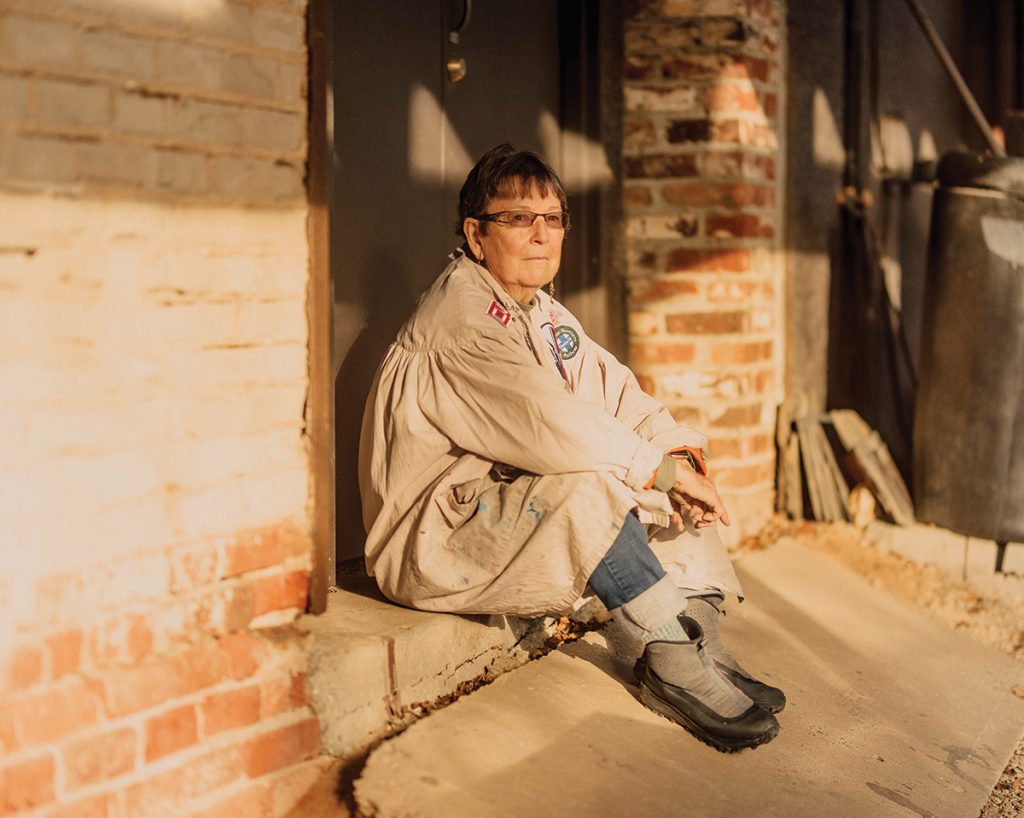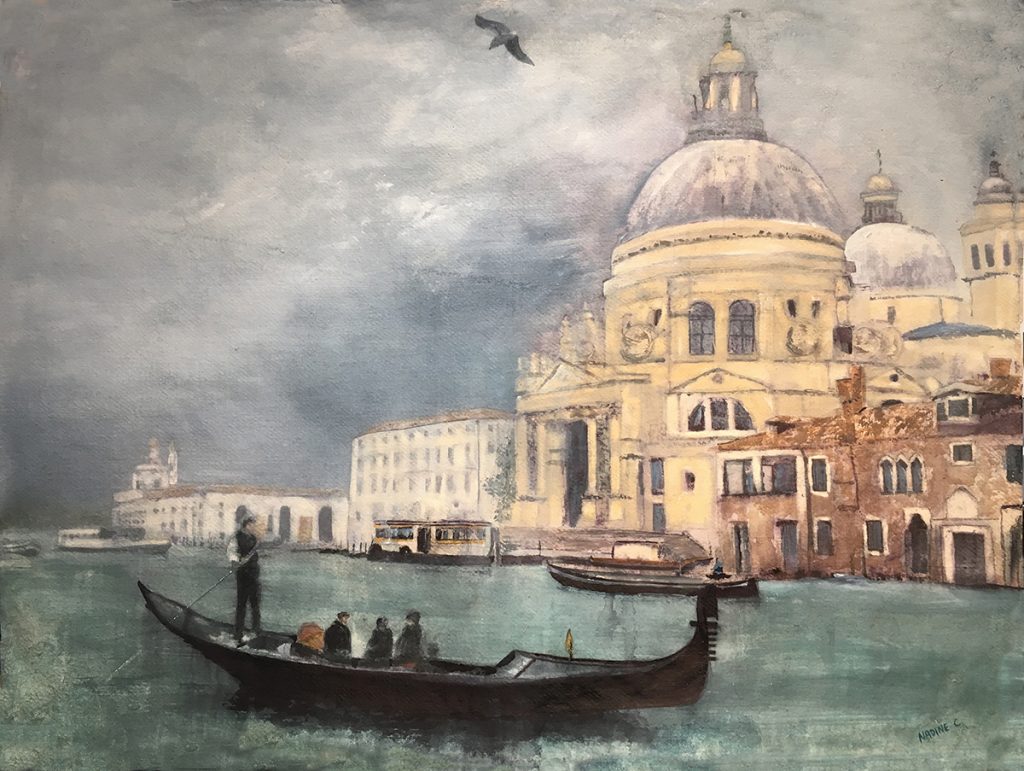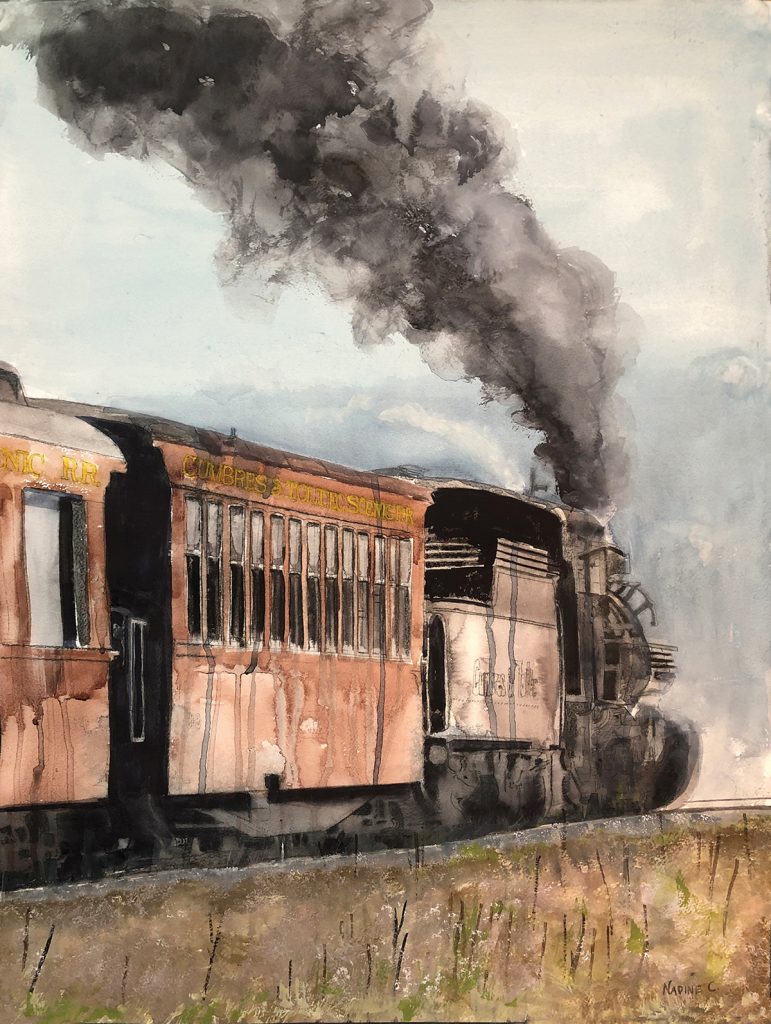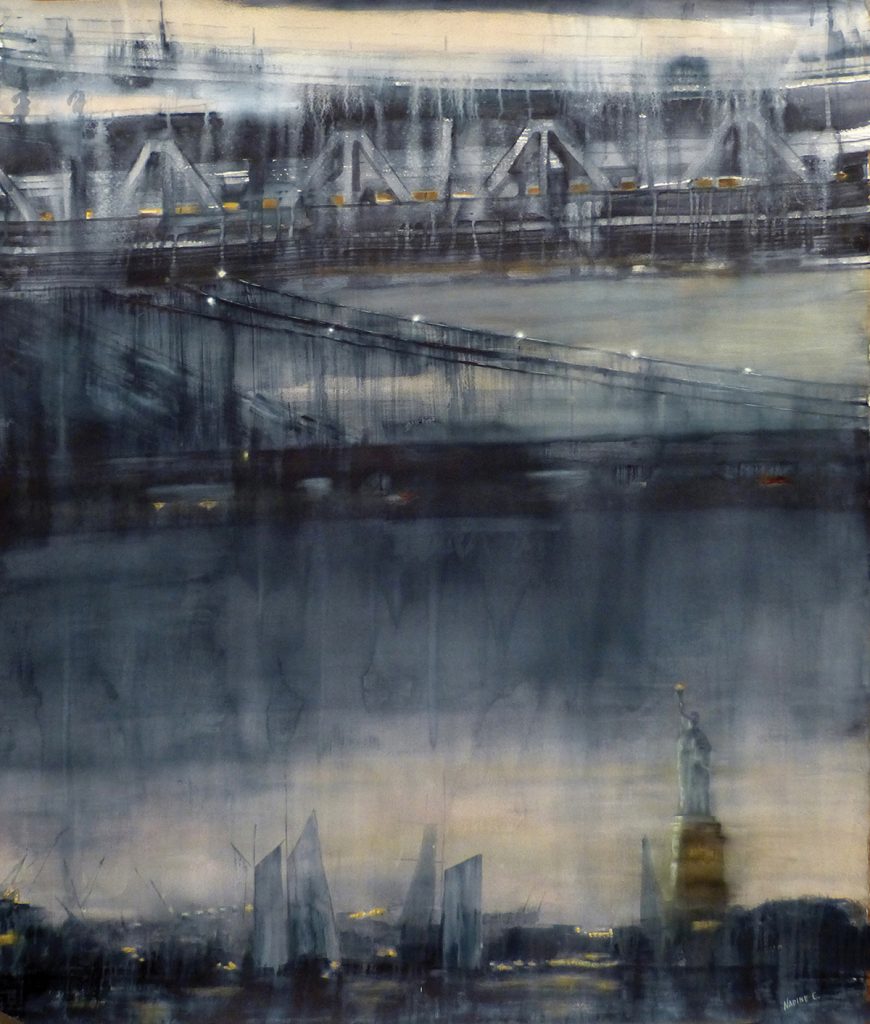
Portrait by Clark Hodgin
The use of watercolor may be associated with ethereal landscapes or delicately rendered floral designs, but for Asheville painter Nadine Charlsen, it’s the perfect medium for more muscular subject matter — industrial architecture, urban landscapes, and the machinery of transportation. “I’ve worked in oils, acrylics, charcoal, sculpture, but watercolor is so much more fun,” says Charlsen. “There are so many approaches that most artists are afraid to try with watercolor.”

Photo by Clark Hodgin
With an MFA from Brooklyn College, trained at New York’s Art Students League, and retired from a five-decade career as an art teacher and scenic-and-lighting designer for New York theater, Charlsen embraced both a new home and new subject material in Asheville’s River Arts District, where she works from her Northlight Studios on Depot Street.
“I found an accepting art community and a niche for my nontraditional watercolor work,” she says. “I find the industrial areas of the RAD very interesting, which is one reason why I moved here.” The district aligned with her interest in depicting modes of transportation, given the area’s historic ties to railroads.

Much of her work since settling in Asheville revolves around trains and the railroad’s infrastructure, captured in the artist’s signature style in which the sharp lines and angles of metal and wood are softened by watercolor’s muted hues, enveloped in swirls of steam against blue-gray skies. “I use much more pigment and less water than most watercolor artists,” Charlsen explains. “I don’t have any rules or procedures that I follow. The contemporary, experimental techniques I learned at the Art Students League make watercolor the most exciting medium I’ve found.”

Working from her own photos and after sketching in the main outlines of a new work, Charlsen counterintuitively begins with the darker areas of her composition rather than overpainting them on lighter background sections. “After that, how I proceed depends on the subject and focus of the composition,” she notes. “The differences depend on how detailed and realistic I want the outcome to be.” Her Manhattan landscapes are generally darker and more diffuse in tone, while a series based on her travels in Italy is rendered with a somewhat lighter palette. Sandpaper, Exacto knives, and eye droppers may also be employed to add texture and depth — another departure from traditional watercolor technique. Brushes usually employed for oil painting or the brushes she once used for her scenic work in the theater figure in the mix, too.

Its very fluidity gives it the reputation of being hard to control, but watercolor, Charlsen insists, “is so much easier to correct” than other mediums. “You can beat up the paper, erase back to the paper, and layer light on dark and vice versa … I find it more experimental with every painting.”

She shares her enthusiasm for watercolor’s wayward possibilities with students at the RAD’s 310 Art, although those workshops have been on hold during the pandemic.
The hiatus, she says, has deepened her relationship with her own endeavors. “While I’m working on a painting, I remember where I was, what I was feeling, and what story I can tell that did or could take place in that setting. I take myself out of the pandemic and into happier times in my life.”

Nadine Charlsen, River Arts District, Asheville: Northlight Studios (357 Depot St., northlightstudiosasheville.com) and 310 Art (191 Lyman Street #310, 310art.com). For more information, call 917-656-1313 or see nadinepaints.com.